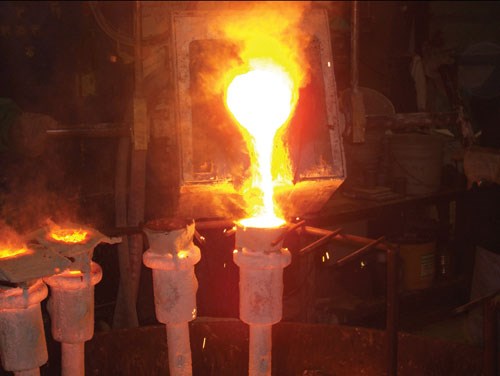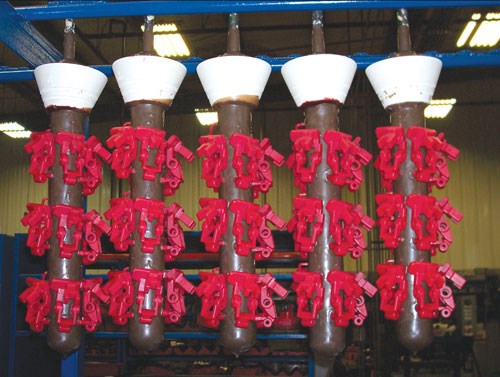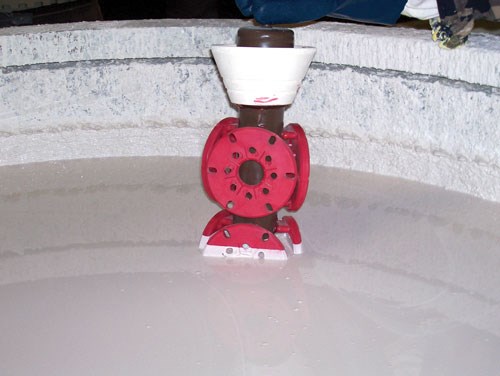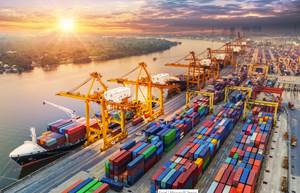Good Investment Casting
An increasing number of shops that make metal parts that are intricate, require extensive machining or are produced repetitively or in limited quantities, are finding that investment casting is the ideal solution.
If you’re fabricating parts out of bar metal, chances are it’s costing you a lot of extra time and money. If those parts require extensive machining, you could be losing significant money in scrap, especially if you’re using pricey metals or alloys.
An increasing number of shops that make metal parts that are intricate, require extensive machining or are produced repetitively or in limited quantities, are finding that investment casting is the ideal solution.
Investment casting offers a variety of alloys while saving finishing time and material waste. The process can also enable a company to combine two or more parts into a single piece, saving on fabrication, welding or assembly and machining time. The range of metals and alloys that can be investment-cast is broad, including low-cost alloys such as carbon and many tool steels or costly alloys such as aluminum, stainless steel, hastalloy, cobalt and Inconel.
When it comes to making metal parts, investment casting can provide a high return on investment for your shop and customers. Somewhat overlooked today, investment casting—forming metal parts in disposable molds—offers opportunities to create “near-net shape” parts of virtually any metal, even in low quantities.
Investment casting is an ideal process for those who fabricate or use metal parts repetitively, whether intricate shapes or components that require precise tolerances. If those parts weigh between 1 ounce and 30 pounds, they can be investment-cast in close tolerances with surfaces that require little finishing.
As opposed to forming parts from bar metal, investment casting is also beneficial for fabricators who want to combine components into a single piece or use pricey metals and want to avoid wasted material while minimizing machine time, which can run $85 to $100 per hour including machine cost.
“I suppose that some fabricators look at the somewhat higher initial cost and don’t realize all the savings of investment casting in time and materials, saving money in the long run. Plus, they can produce a better part,” says Carl Johnson Jr., vice president of Staten Island Machine Shop Inc. (Staten Island, New York).
Mr. Johnson, whose shop produces metal shafts as well as plate and sheet metal, explains that the stainless shafts he fabricates in relatively small lots are investment-cast rather than cut from barstock or formed by sand casting and then finished.
“For one thing, in this part of the country it is becoming difficult to find qualified machinists,” Mr. Johnson says. “There are few machinists or CNC operators coming out of schools today, and that—as well as the cost of equipment and labor—has become a problem for many machine shops. To an extent, investment casting alleviates this problem, because it eliminates some of the burden of machining.”
Several years ago, Staten Island Machine Shop began having some of the parts they previously had sand cast instead supplied by Rimer Enterprises, an investment casting specialist.
Mr. Johnson adds that the stainless steel gears his shop now gets from Rimer, typically for marine applications, are high-precision parts that slide over or under other components. In the past, when the gears were made from sand castings, there could be significant shifting or other movement.
“This problem is far less likely to happen with investment-cast gears because the rotations are right on, the holes are exactly where they should be, and all critical dimensions and tolerances are very close, which also minimizes the need for machining,” he says.
While reducing the demand on machine time is a significant savings, there is also substantial added savings in costly metals used to fabricate many parts. Chuck Myers, president of Rimer Enterprises says, depending on the metals and alloys used to make the castings, the differences in material costs could be stunning.
“For example, if you are machining a piece of stainless steel that costs $5 per pound, you might be machining 80 percent of the steel out for your finished product,” Mr. Myers explains. “By the time the part is finished you’ve got 4 pounds of stainless steel chips that you end up selling to a scrap dealer for $2 per pound. If the same part is investment-cast, the near-net shape eliminates the scrap, which could represent many dollars in savings per part in alloy cost as well as labor.”
The general manager of an Ohio-based machine shop says that one of the main reasons he buys investment castings is that he can’t get the needed material in barstock and prefers not to use sand castings. However, the savings on materials is also significant.
“The advantage of getting a near-net shape means less machining and also material savings,” the general manager explains. “So when you make parts with alloys, such as the nickel-based alloys that we use, there is a significant cost savings because you don’t have to throw half of the metal away in chips. And of course, the machine time is less when you have parts that are cast close to size.”
This shop, which also has its investment castings made by Rimer, recognizes that the consistency of investment-cast products is a noteworthy benefit.
While investment casting may provide quantum savings in terms of time, material and labor, some people have concerns about turnaround time. “When we need castings it is usually because a customer is running the same part except that the dimension may change,” the general manager says. “We try to stay ahead of the game, but we can’t anticipate how long their production runs are going to be. So, if we get caught short, any delay in turnaround time can really hurt.”
In anticipation of such problems, Rimer made substantial new investments in its in-house capabilities when it took over ownership of the business several years ago. For example, in 2006, it installed a robot dipping system to reduce leadtime through the shop and improve the consistency of products. The newly expanded facilities also include a very modern CNC tooling shop and a CNC machine shop for machining castings.
“Turnaround time in our industry is often 10 to 12 weeks,” Mr. Myers says. “We have been able to cut that time more than 60 percent. In emergency situations, we will do everything we can to turn around the needed castings as quickly as possible.”
Related Content
T.J. Davies Retention Knobs Harden Over Time
Each retention knob is magnetic particle tested and pull tested to 2.5X the pulling force of the drawbar it is designed for.
Read MoreSandvik Coromant Inserts Provide Stable Turning of Aerospace Components
The new insert grades GC1205 and GC1210 cover a large application area within last-stage machining and intermediate-stage machining when turning aerospace engine components.
Read MoreHow Small Machine Shops Can Fight Supply Chain Problems
Supply chain disruptions are still presenting challenges in manufacturing. This article examines the effects on aerospace, automotive and medical industries. It also covers ways that machine shops can be successful securing work despite the challenges created by the supply chain.
Read MoreForkardt Hardinge Swiss Workholding Provides Reliable, Consistent Performance
The company’s Swiss collets are designed to securely hold parts without marring surfaces, minimizing vibration to ensure smoother machining, enhanced accuracy and extended tool life.
Read MoreRead Next
Emerging Leaders Nominations Now Open
Here’s your chance to highlight a young person in your manufacturing business who is on the path to be a future leader moving your company forward.
Read MoreA Tooling Workshop Worth a Visit
Marubeni Citizen-Cincom’s tooling and accessory workshop offers a chance to learn more about ancillary devices that can boost machining efficiency and capability.
Read More5 Aspects of PMTS I Appreciate
The three-day edition of the 2025 Precision Machining Technology Show kicks off at the start of April. I’ll be there, and here are some reasons why.
Read More




















.jpg;maxWidth=300;quality=90)







